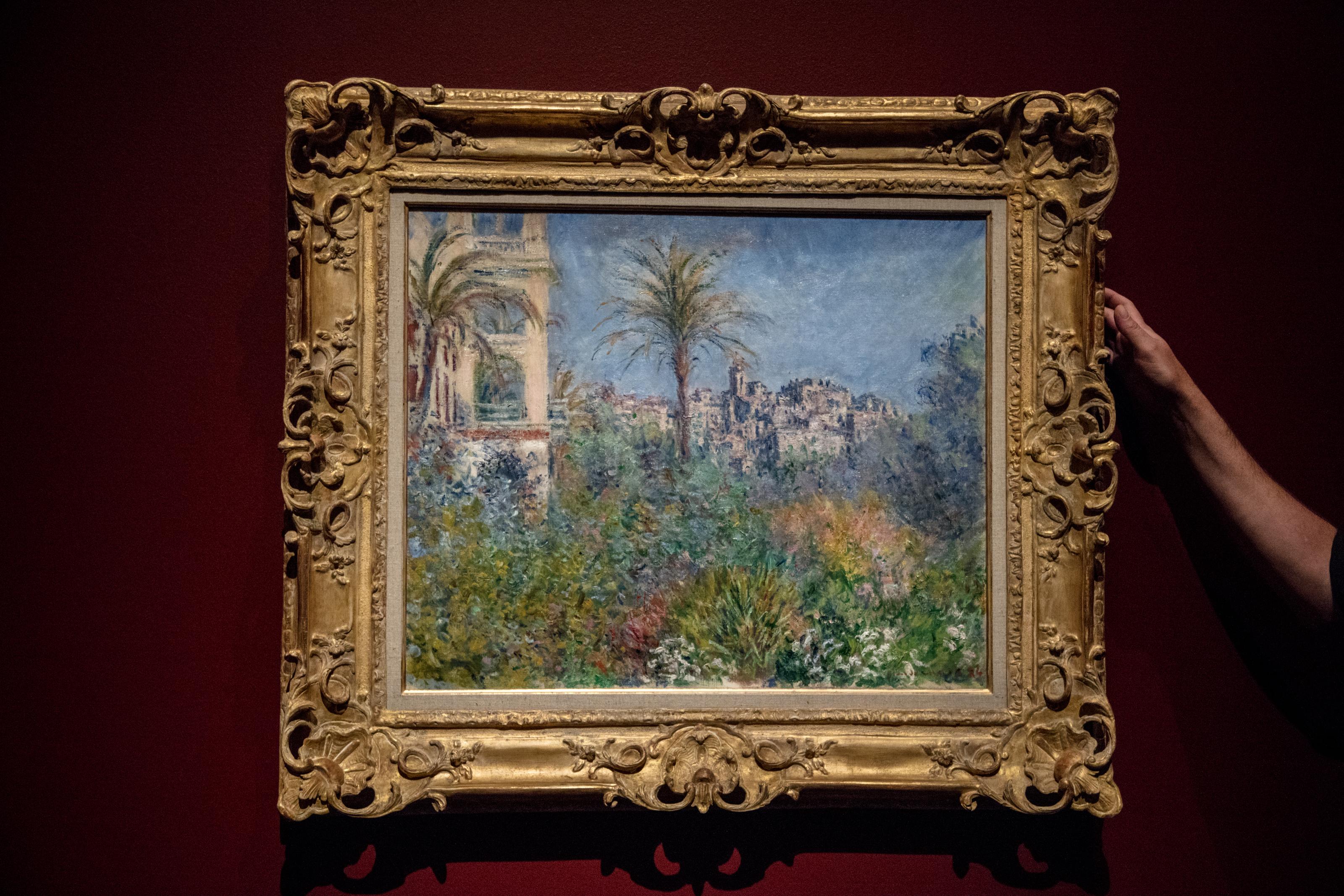
You probably have heard that Denver is playing host to the most comprehensive Monet exhibition in the U.S. in more than 20 years.
You're not alone. But it's not just good-hearted art lovers who are paying attention to the arrival of the Impressionist masterworks.
“Not only is it a great art historical-type of exhibition, but it would also bring interest from, I would say, thieves," Bob Wittman said.
Wittman is a former FBI agent and has been called a “modern-day Indiana Jones” for his work in recovering stolen art. With 120 paintings on loan from about 70 lenders all over the world, the DAM’s exhibit obviously has a hefty price tag attached, and Wittman said that can attract some unsavory attention.
“Museums never want to talk about value, and the reason for that is they don’t want to give anybody any ideas,” he said.
Indeed, the Denver Art Museum declined to comment for this story out of caution. But Wittman still had an idea of the value of “Claude Monet: The Truth of Nature.”
“An exhibition around the country that could have hundreds of paintings of Renoir or Monet or even Manet would be in the hundreds of millions of value," he said.
So how do museums protect against would-be art burglars? And do those thefts really look like people rappelling from the ceiling under the cover of darkness to make off with an art fortune?
As you could guess, not really.
“The heists rarely happen and they rarely happen the way they depict them in the movies,” said Steve Keller, a museum security expert in Florida who’s been protecting priceless art for more than 40 years.
Art theft is more often a crime of opportunity or an inside job, Keller said. But museums still prepare for the unlikelier movie-style heist alongside the more common crimes and threats caused unintentionally by guests.
Most of that planning happens in the design phase when security personnel play an advisory role in the exhibit layout.
“[The security people] will step in from time-to-time to say, 'This is a bottleneck as we see it,' and, 'I think that this doorway needs to be wider,' or 'The label might have a very small font, so people (could) crowd in close, blocking the view of the security people,'” Keller said. “Or the audio tour message might be too long, so people assemble in a particular location long enough that a bottleneck develops.”
- “Claude Monet: The Truth of Nature” is here. This is how it all came together
- When a Monet travels to Denver for its big moment, it travels better than you do
- The Denver Art Museum has an unusually large, practically exclusive Monet exhibition. So what? (via Denverite)
- If you go: A Denverite's guide to seeing this year's very-big-deal art show (via Denverite)
Most security tactics in place at a museum are things you can’t see.
“There’s a theory that we follow that there’s enough security visible in the gallery that the bad guy will look for it and see it, but the average visitor to the museum will not,” he said. “It gives them a more relaxed atmosphere.”
Advances in technology have helped make museum security increasingly invisible, Keller said, like tiny cameras on the frames of paintings or motion detectors that can go live after hours of no movement.
But even with all this security, art theft still happens. And on rare occasions it does look like a dramatic, movie-like heist. Last month, a billion dollars worth of jewelry was stolen from the Green Vault Museum in Dresden, Germany.
“The individuals broke a window, busted the glass, went in, used a smash and grab technique where they took axes and destroyed cabinets,” Wittman said. “They then grabbed almost a billion dollars worth of Saxony jewelry from the 16th century and made their getaway.”
While escaping, the thieves in Germany also burned their getaway car. Wittman said part of the reason they got away was because the Green Vault museum’s security technology “left something to be desired.” Their night vision cameras weren’t up to par, and it took too long for the guards to do their rounds.
But there’s still a chance these thieves will get caught. The tricky thing about stealing art, Wittman said, is not the theft itself, but the selling part.
“You know sometimes these thieves who create these elaborate heists, they’re much better criminals than they are businessmen,” he said. “Because they haven’t thought out what they’re actually going to do with these paintings once they have them.”
Unloading stolen art is no easy task. That’s because there’s no black market for art, Wittman said.
“When it comes to, say, automobiles, you can steal it. (Then) you can chop it up, take the parts. Sometimes the sale of the parts is worth more than the car originally was,” he said. “Because artworks are unique, you can’t chop them up. You can’t do anything with them. You have to keep them in great shape. And they are known pieces, so in the end, when someone tries to sell one, that’s when they get busted.”
While the Denver Art Museum's security plan for the Monet exhibit is unknown, both Wittman and Keller have the utmost confidence that the art is safe, even if the regular visitor can't tell. People don’t always realize how much effort goes into protecting these works, Keller said.
“Most of these larger museums like the Denver Art Museum have very competent security management teams,” he said. “There’s more to appreciate than just the beauty of the art.”









